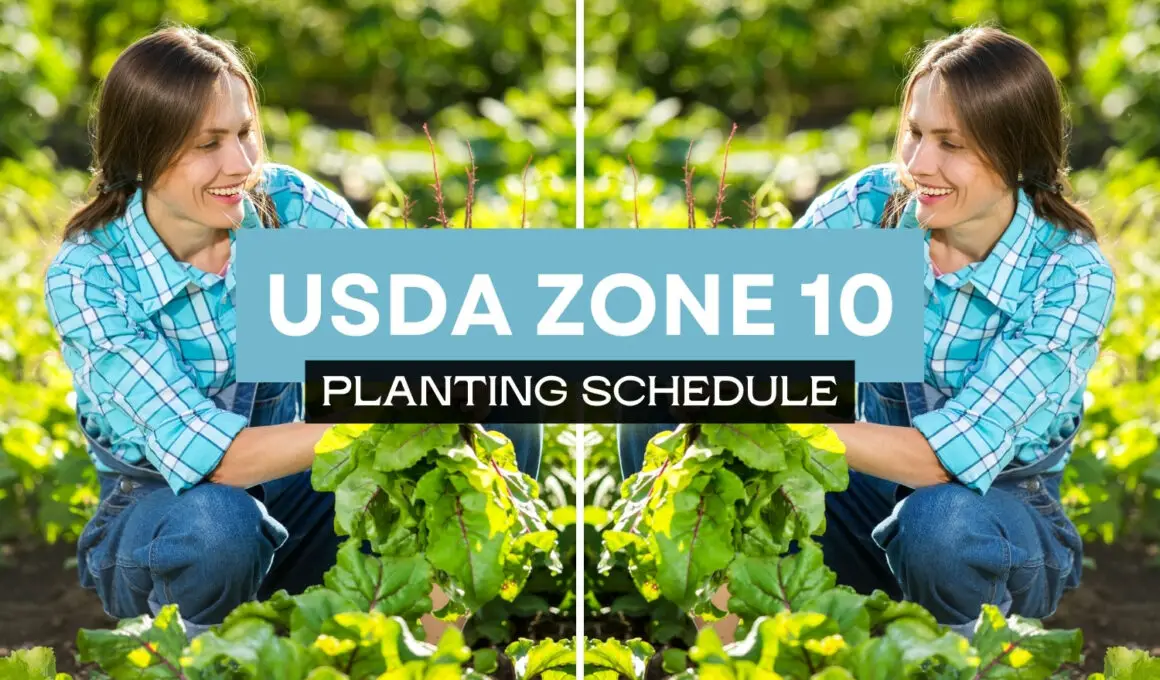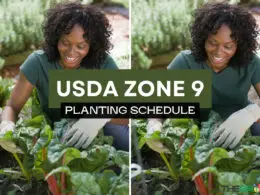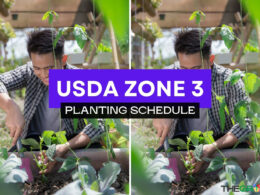In This Article Show
Welcome to our definitive guide on the Zone 10 planting schedule, meticulously crafted for gardeners who revel in one of the warmest climates the United States has to offer. Zone 10 is a gardener’s paradise, characterized by its year-round warmth, minimal frost, and the luxury of an almost perpetual growing season.
This unique climate presents an unparalleled opportunity to cultivate a vibrant and diverse garden that can produce fresh flowers, vegetables, and fruits throughout the year. Our guide aims to harness the full potential of Zone 10’s endless summer, offering expert advice on selecting the right plant varieties, mastering soil preparation, and navigating the local microclimates.
Whether you’re aiming to create a lush vegetable garden, a stunning floral display, or a fruitful orchard, our month-by-month breakdown, coupled with tailored gardening tips, will ensure your green space not only survives but thrives. Let’s embark on a journey to transform your Zone 10 garden into a thriving oasis that celebrates the richness of year-round gardening.
Key Factors for Success in Zone 10
Gardening in Zone 10 offers a unique set of opportunities thanks to its warm climate and extended growing season. To achieve a flourishing garden in this region, consider these essential factors:
Understanding Local Microclimates within Zone 10
- Microclimate Recognition: Zone 10 encompasses a range of microclimates, influenced by proximity to the ocean, urban areas, and elevation changes. Identifying your garden’s specific microclimate can help tailor your gardening practices for better success.
- Adaptation: Use your understanding of your local microclimate to select plants suited to your specific conditions, adjust planting times, and implement appropriate water and shade strategies to protect against the hottest parts of the year.
Soil Preparation and Improvement Strategies Tailored to Zone 10’s Conditions
- Soil Testing: Start with a comprehensive soil test to understand your soil’s pH, nutrient levels, and composition. Zone 10 can have varied soil types, from sandy coastal soils to denser inland clays.
- Amendment: Depending on your soil test results, amend your soil to improve its structure, fertility, and water-holding capacity. Organic matter, like compost, is key to enhancing sandy soils, while gypsum can help break up clay soils.
- Mulching: Apply organic mulch to conserve moisture, reduce weed growth, and regulate soil temperature. In Zone 10’s heat, mulch also helps protect plant roots from extreme temperatures.
Selecting Plant Varieties that Thrive in Zone 10’s Warm Climate
- Heat-Tolerant Varieties: Opt for vegetables, flowers, and herbs that can withstand high temperatures and thrive in warm conditions. Research plant varieties are known for their resilience to Zone 10’s climate.
- Year-Round Planting: Take advantage of Zone 10’s nearly year-round growing season by planting a mix of perennials, annuals, and biennials that will provide continuous color and harvests.
- Exotic and Tropical Plants: Zone 10’s climate is conducive to growing a range of exotic and tropical plants that are not viable in cooler zones. Consider incorporating citrus trees, palms, and other tropicals into your landscape.
Additional Tips for Gardening Success in Zone 10
- Irrigation: Implement efficient watering practices, such as drip irrigation or soaker hoses, to deliver water directly to the roots, reducing evaporation and conserving water.
- Shade Strategies: Use shade cloth or plant taller crops to provide partial shade for heat-sensitive plants during the hottest months.
- Pest and Disease Vigilance: Warm climates can harbor pests and diseases year-round. Regularly inspect your plants and practice proactive pest and disease management to keep your garden healthy.
By focusing on these key factors, gardeners in Zone 10 can navigate the challenges and rewards of their unique climate, cultivating lush, productive gardens that are a joy to behold throughout the year.

Zone 10 Planting Schedule: Month-by-Month Guide
Winter (December – February)
Get Gardening For Beginners
Our new EBOOK shows newcomers and green thumbs alike a step by step guide to growing the garden of their dreams.
Ideal Vegetables and Flowers to Plant During Zone 10’s Mild Winters
- Vegetables: Cool-season vegetables like kale, lettuce, broccoli, and carrots thrive in the mild winters. These can be planted for a continuous harvest.
- Flowers: Winter is a great time to plant hardy annuals like pansies, violas, and snapdragons, as well as perennials such as primroses and some varieties of daisies that can handle the mild winter temperatures.
Preparation for Spring Planting and Maintenance Tasks
- Soil Preparation: Take advantage of the cooler weather to enrich your garden beds with compost and other organic matter.
- Pruning: Late winter is ideal for pruning perennial plants and trees (except for those that bloom in spring) to promote healthy growth in the coming season.
- Planning: Start planning your spring garden layout and order seeds or seedlings in preparation for the planting season.
Spring (March-May)
Recommendations for Vegetables, Herbs, and Flowers to Start in Spring
- Vegetables: As the weather warms, begin planting warm-season crops like tomatoes, peppers, cucumbers, and eggplants. Start seeds indoors early in the season to transplant after the risk of any cool weather has passed.
- Herbs: Plant a variety of herbs such as basil, cilantro, thyme, and mint. Most herbs prefer the warmer spring weather and can be started from seeds or transplants.
- Flowers: This is the perfect time to plant heat-loving annuals (e.g., marigolds, zinnias, and petunias) and tropical perennials, which will thrive as temperatures rise.
Tips for Lawn Care and Garden Maintenance as Temperatures Begin to Rise
- Watering: Establish a regular watering schedule to ensure plants receive adequate moisture, particularly as the days start to get warmer.
- Mulching: Apply a fresh layer of mulch around your plants to help retain soil moisture, reduce weed growth, and keep root systems cool.
- Fertilization: Spring is a good time to fertilize your garden and lawn to support vigorous growth. Use a balanced fertilizer appropriate for the plants you are growing.
- Pest and Disease Control: Begin regular inspections for pests and diseases. Early detection and treatment can prevent more significant problems as the season progresses.
This planting schedule for Zone 10 takes full advantage of the region’s warm climate, allowing gardeners to enjoy a rich variety of plants throughout the winter and spring months. By preparing in advance and choosing the right plants for the season, you can ensure a vibrant and productive garden all year round.
Summer (June – August)
Transitioning to Heat-Tolerant Plant Varieties
- Vegetables: Emphasize planting heat-loving vegetables like okra, sweet potatoes, and tropical varieties of squash. These plants can handle Zone 10’s intense summer heat.
- Flowers: Opt for heat-tolerant annuals such as vinca, portulaca, and sunflowers. These will continue to thrive and bloom even in the hottest months.
Direct Sowing and Transplanting Tips for Summer Success
- Soil Preparation: Ensure the soil is well-aerated and enriched with compost to retain moisture and support plant health during the heat.
- Timing: Plant either early in the morning or late in the afternoon to avoid the hottest part of the day, minimizing stress on plants and gardeners alike.
Strategies for Watering, Pest Control, and Disease Management During Peak Heat
- Watering: Implement deep watering practices early in the morning to encourage root development and reduce evaporation. Consider using drip irrigation to deliver water directly to the plant roots efficiently.
- Mulching: Maintain a thick layer of mulch to conserve soil moisture and keep roots cool.
- Pest and Disease Vigilance: High humidity and heat can increase pest activity and disease spread. Regularly inspect plants, and adopt integrated pest management strategies to address any issues promptly.
Fall (September – November)
Fall Planting Opportunities Unique to Zone 10
- Cool-Season Vegetables: Begin planting cool-season crops such as lettuce, carrots, and broccoli in late fall. These can grow through the mild winter.
- Perennials and Bulbs: Plant or transplant perennials, including those that bloom in winter or early spring. It’s also the perfect time to plant bulbs for spring blooms.
Preparing the Garden for the Cooler Months and Planning for the Next Year’s Growth
- Soil Care: Add organic matter and conduct soil tests to prepare for the next planting season. Adjust pH and nutrient levels as needed.
- Garden Cleanup: Remove spent annuals and any plant debris to reduce the risk of pests and diseases overwintering in the soil.
- Plant Protection: While Zone 10 experiences mild winters, it’s important to protect sensitive plants from any unexpected cold snaps with covers or by bringing them indoors if possible.
- Planning: Review the successes and challenges of the current year to inform your garden planning for the next year. Consider crop rotation in vegetable gardens to maintain soil health.
By adjusting gardening practices to suit the seasonal conditions in Zone 10, gardeners can ensure a productive garden throughout the summer and into the fall. Embracing the region’s warm climate allows for an extended growing season, offering unique opportunities for a diverse range of plants.
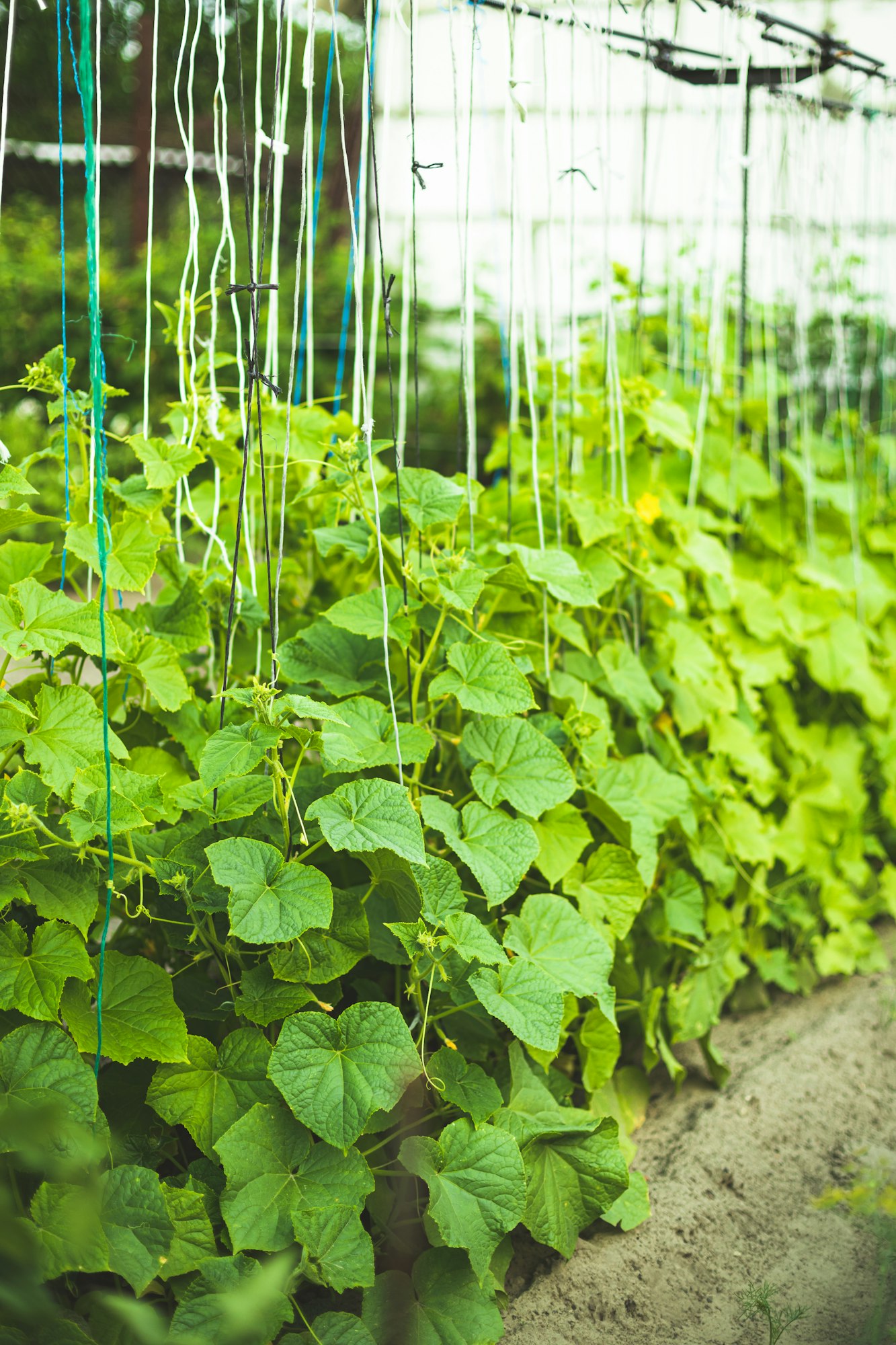
Vegetable Planting Guide for Zone 10
Zone 10 offers a nearly year-round planting window for many vegetables, thanks to its warm climate. Below is a chart detailing the optimal planting times for common vegetables in Zone 10, accompanied by success tips for each.
| Vegetable | Optimal Planting Times | Success Tips |
|---|---|---|
| Tomatoes | Jan – Mar, Aug – Sep | Choose heat-tolerant varieties. Use mulch to retain soil moisture and provide support with stakes or cages. |
| Peppers | Jan – Mar, Aug – Sep | Require consistent moisture. Companion plant with basil to repel pests. |
| Cucumbers | Feb – Apr, Sep | Use trellises to save space and keep fruits clean. Water evenly to avoid bitterness. |
| Squash | Feb – Apr, Sep | Provide ample space for vines. Plant marigolds nearby to deter pests. |
| Beans | Feb – Apr, Aug – Sep | Rotate crops to prevent disease. Good companions are carrots and cauliflower. |
| Lettuce | Oct – Mar | Prefers cooler temperatures. Provide some shade during the hottest parts of the day. |
| Carrots | Sep – Feb | Light, sandy soil is ideal. Keep soil moist for even growth. |
| Beets | Sep – Feb | Ensure soil is loose and fertile. Companion plant with onions to deter pests. |
| Kale | Sep – Jan | Mulch to retain soil moisture. Plant near herbs to enhance flavor and deter pests. |
| Spinach | Oct – Feb | Prefers cool weather. Use organic mulch to maintain moisture. |
| Radishes | Sep – Mar | Fast-maturing. Water evenly for best growth. Avoid overcrowding by thinning early. |
| Broccoli | Aug – Jan | Requires consistent moisture and cooler temperatures. Plant near dill or rosemary to deter pests. |
Success Tips for Vegetable Gardening in Zone 10
- Soil Preparation: Begin with well-draining soil rich in organic matter. Amend the soil as needed based on a soil test to ensure the best growth environment for your vegetables.
- Watering: Implement a consistent watering schedule, especially for young plants and during dry spells. Drip irrigation or soaker hoses are ideal for delivering water directly to the root zone, reducing waste and disease risks.
- Mulching: Apply a layer of organic mulch around plants to conserve moisture, regulate soil temperature, and suppress weed growth. This is particularly important in Zone 10, where high temperatures can quickly dry out the soil.
- Companion Planting: Utilize companion planting to naturally repel pests and enhance growth. For example, planting marigolds among your vegetables can deter nematodes and other pests.
- Pest and Disease Management: Regularly inspect your garden for signs of pests and diseases. Practice integrated pest management (IPM) strategies, prioritizing organic and environmentally friendly solutions whenever possible.
- Succession Planting: Take advantage of Zone 10’s long growing season by planting crops in succession. This allows for a continuous harvest of vegetables throughout the year.
By following this planting guide and incorporating these success tips, gardeners in Zone 10 can enjoy a productive and vibrant vegetable garden nearly year-round. Adjust planting times and care based on specific local conditions within your part of Zone 10 for the best results.
Get Gardening For Beginners
Our new EBOOK shows newcomers and green thumbs alike a step by step guide to growing the garden of their dreams.
Flower Planting Guide for Zone 10
Zone 10’s warm climate is ideal for a wide variety of flowering plants. This guide provides a selection of annuals and perennials that thrive in this zone, along with tips for ensuring vibrant blooms and healthy growth.

Annuals for Zone 10
- Zinnias: Plant in full sun after the danger of any cool weather has passed. Zinnias need well-drained soil and benefit from deadheading to encourage continuous blooming.
- Marigolds: Sow directly into the garden in a sunny location. They are drought-tolerant and help deter pests in vegetable gardens.
- Petunias: Ideal for containers or ground cover, petunias prefer full to partial sun. Keep the soil moist and remove faded flowers to stimulate new blooms.
- Impatiens: Perfect for adding color to shady areas. Ensure they have rich, well-draining soil and keep them watered during dry spells.
Perennials for Zone 10
- Bougainvillea: Thrives in full sun and requires minimal watering once established, making it perfect for Zone 10’s climate. Provide support for climbing varieties.
- Hibiscus: Known for large, colorful blooms, hibiscus prefers full sun and regular watering. Protect from cold snaps and use a slow-release fertilizer for best results.
- Bird of Paradise (Strelitzia): With its exotic flowers, this plant needs full sun to partial shade and regular watering. It’s ideal for a tropical-themed garden.
- Plumeria: Requires full sun and well-drained soil. Allow the soil to dry out between waterings. Plumeria is perfect for creating a fragrant, tropical landscape.
Planting and Care Tips for Vibrant Blooms and Healthy Plants
- Soil Preparation: Amend the soil with compost or a balanced, slow-release fertilizer at planting time to encourage strong root development and vibrant blooms.
- Watering: While many Zone 10 plants are drought-tolerant, establishing plants requires consistent moisture. Once established, adjust watering according to each plant’s needs, focusing on deep, less frequent watering to encourage root growth.
- Mulching: Apply a layer of mulch around plants to retain soil moisture, regulate temperature, and reduce weed competition. Organic mulches also improve soil quality as they decompose.
- Fertilization: Feed flowering plants with a fertilizer high in phosphorus (the middle number in fertilizer ratios) to encourage blooms. Follow package instructions for application rates and timing.
- Pruning: Regularly deadhead spent flowers to encourage more blooms. Prune perennials as needed to remove dead or damaged growth and to shape the plants.
- Pest and Disease Management: Monitor plants for signs of pests and diseases. Use environmentally friendly treatments whenever possible, focusing on prevention with healthy cultural practices.
By selecting the right plants for Zone 10 and following these care tips, gardeners can enjoy a lush, colorful garden filled with flowers almost year-round. Adjust care practices based on the specific needs of each plant and local garden conditions for the best results.
Herbs and Fruit Trees for Zone 10
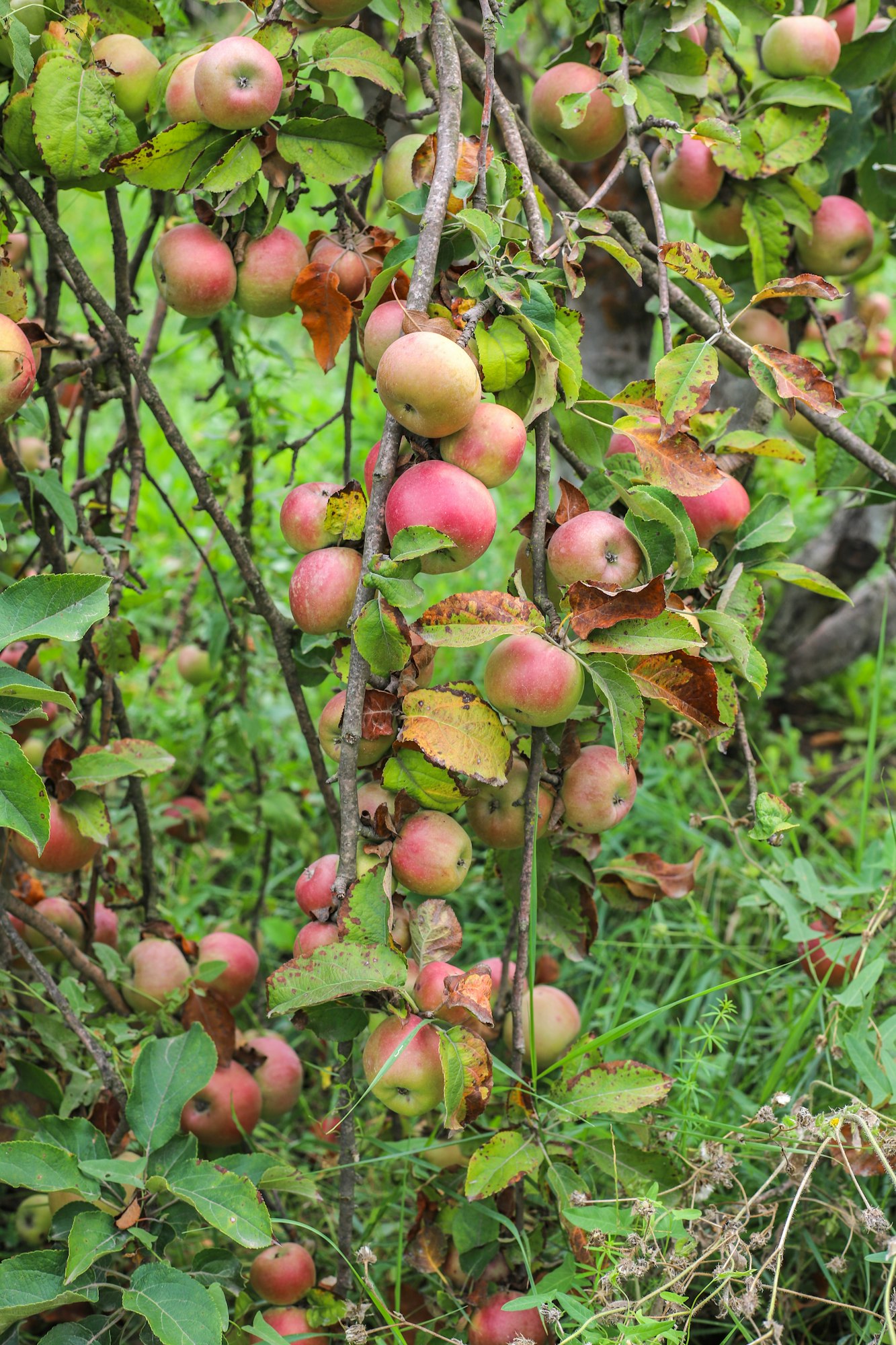
Zone 10’s warm climate provides an excellent environment for growing a wide range of herbs and fruit trees. Here are some of the best choices for this zone, along with their care requirements.
Best Herbs for Zone 10
- Basil: Thrives in full sun and well-drained soil. Water regularly and pinch off flower buds to encourage bushier growth. Basil is sensitive to cold, so protect it from any unexpected cool snaps.
- Cilantro: Prefers cooler weather but can be grown in partial shade during hotter months to extend its growing season. Keep soil moist for best growth.
- Mint: Ideal for containers to control its invasive nature. Mint prefers moist, well-drained soil and can thrive in both full sun and partial shade.
- Rosemary: Loves full sun and well-drained soil. Once established, it’s drought-tolerant, making it an excellent herb for Zone 10’s climate.
- Lemongrass: Thrives in full sun and moist, well-drained soil. It’s a tropical plant that does well in the warmth of Zone 10 and can also act as a natural mosquito repellent.
Recommended Fruit Trees for Zone 10
- Citrus Trees (Lemons, Oranges, Limes): Citrus trees are well-suited to Zone 10’s warm climate. They need full sun and well-draining soil. Water deeply but infrequently to encourage deep root growth.
- Mango Trees: Require full sun and plenty of space to grow. They prefer well-drained soil and are drought-tolerant once established.
- Avocado Trees: Plant in well-drained soil and protect from strong winds. Regular, deep watering is crucial for young trees, especially during dry spells.
- Papaya Trees: Best suited for the warmest areas of Zone 10. They need full sun, ample moisture, and protection from the wind.
- Fig Trees: Thrive in full sun and can tolerate various soil types, as long as they are well-drained. Figs are drought-tolerant once established.
Benefits of Integrating Edible Plants into the Zone 10 Garden
- Freshness and Nutrition: Growing your herbs and fruit provides the freshest, most nutritious produce possible, enhancing your diet and health.
- Economic Savings: Cultivating your edible plants can save money on grocery bills, especially with high-value items like organic fruits and herbs.
- Educational Value: Gardening with edible plants offers an educational experience for all ages, teaching valuable lessons about nature, agriculture, and nutrition.
- Environmental Benefits: Edible gardens contribute to biodiversity, improve air and soil quality, and can reduce your carbon footprint by decreasing the demand for commercially farmed produce.
- Aesthetic Appeal: Many fruit trees and herb plants are not only productive but also beautiful, adding aesthetic value to your landscape with their flowers, foliage, and fruit.
Care Tips for Success
- Watering: Establish a regular watering schedule, especially for young plants. Use mulch to retain soil moisture and reduce watering needs.
- Fertilization: Apply a balanced fertilizer during the growing season to support healthy growth and fruit production. Specialized citrus or fruit tree fertilizers can provide the specific nutrients these plants need.
- Pruning: Regular pruning helps maintain plant health and productivity, especially for fruit trees. Prune to remove dead or diseased wood and to shape the tree for better light penetration and air circulation.
- Pest and Disease Management: Monitor plants regularly for pests and diseases. Use environmentally friendly methods for control and prevention, focusing on maintaining plant health as the best defense.
Integrating herbs and fruit trees into your Zone 10 garden not only enriches your diet with fresh produce but also enhances your garden’s beauty and biodiversity. With proper care, these plants can provide abundant yields and become a cornerstone of your gardening efforts.
Lawn and Landscape Plants for Zone 10
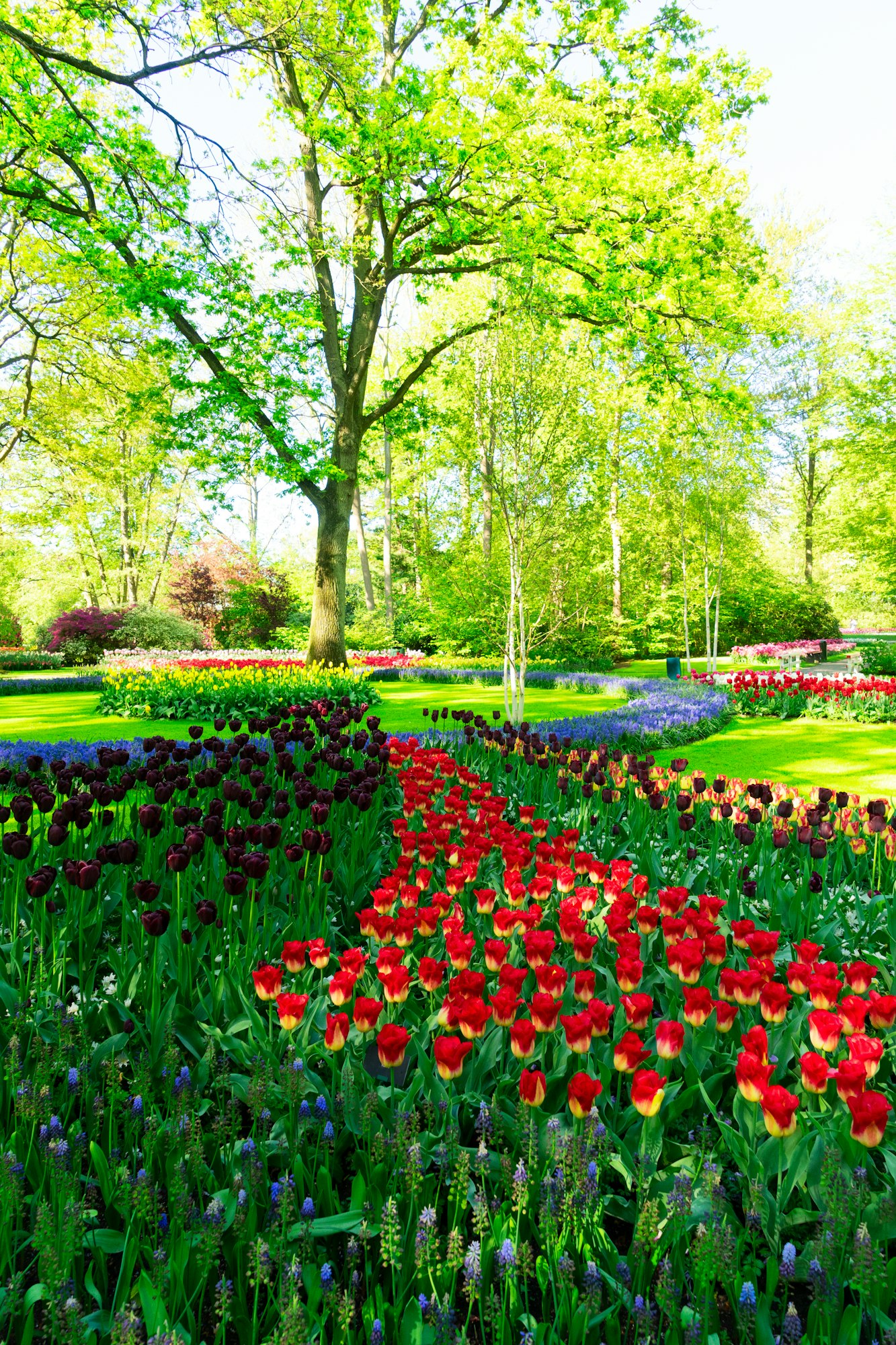
Zone 10’s warm climate supports a diverse array of lawn grasses and landscape plants, enabling gardeners to create lush, vibrant outdoor spaces. Here are some top recommendations for grass types and landscape plants suited to Zone 10, along with maintenance tips to ensure their health and beauty.
Grass Types Suitable for Zone 10
- Bermuda Grass: Highly tolerant of heat, making it an ideal choice for sunny Zone 10 lawns. It’s drought-resistant and creates a dense, durable turf.
- Zoysia Grass: Offers a thick, soft lawn that is drought-tolerant and can handle partial shade. It’s slower growing, reducing the need for frequent mowing.
- St. Augustine Grass: Prefers the warm, coastal climates found in Zone 10. It’s shade-tolerant and thrives in both sun and partial shade, requiring moderate to high water.
Landscape Plants for Zone 10
Shrubs
- Hibiscus: Known for their large, colorful blooms, hibiscus shrubs thrive in full sun and well-drained soil, making them a perfect addition to Zone 10 gardens.
- Bougainvillea: Offers vibrant blooms and thrives in full sun. It’s drought-tolerant once established and excellent for walls or fences.
- Croton: Valued for its colorful foliage, croton performs best in full sun to partial shade and prefers moist, well-drained soil.
Trees
- Royal Poinciana (Delonix regia): This fast-growing tree provides spectacular red flowers and a broad, umbrella-shaped canopy, ideal for adding shade and tropical flair.
- Mango Trees: With adequate space, mango trees can provide delicious fruit in addition to shade and tropical beauty. They require full sun and well-drained soil.
- Palm Trees: Various palm species thrive in Zone 10, adding a quintessential tropical look to the landscape. They generally prefer full sun and well-drained soil.
Maintenance Tips for a Lush, Healthy Lawn and Garden
- Watering: Establish a deep watering schedule to encourage strong root development. Early morning watering is best to minimize evaporation and reduce disease risk.
- Fertilization: Apply a slow-release fertilizer to your lawn and garden plants in the early spring to promote healthy growth. Be sure to follow specific recommendations for each plant type.
- Mulching: Use organic mulch around trees, shrubs, and in garden beds to retain soil moisture, regulate soil temperature, and suppress weed growth.
- Pruning: Regular pruning helps maintain the shape and health of your landscape plants. Prune flowering shrubs after they bloom to avoid cutting off next year’s flowers.
- Pest and Disease Management: Monitor your lawn and garden regularly for signs of pests and diseases. Use environmentally friendly treatments and practice good garden hygiene to manage issues effectively.
By selecting the right grass types and landscape plants for Zone 10 and following these maintenance tips, you can create a stunning outdoor space that thrives year-round. Adjust care practices based on specific plant needs and local conditions for the best results.
Monthly Maintenance Tips for Zone 10 Gardens
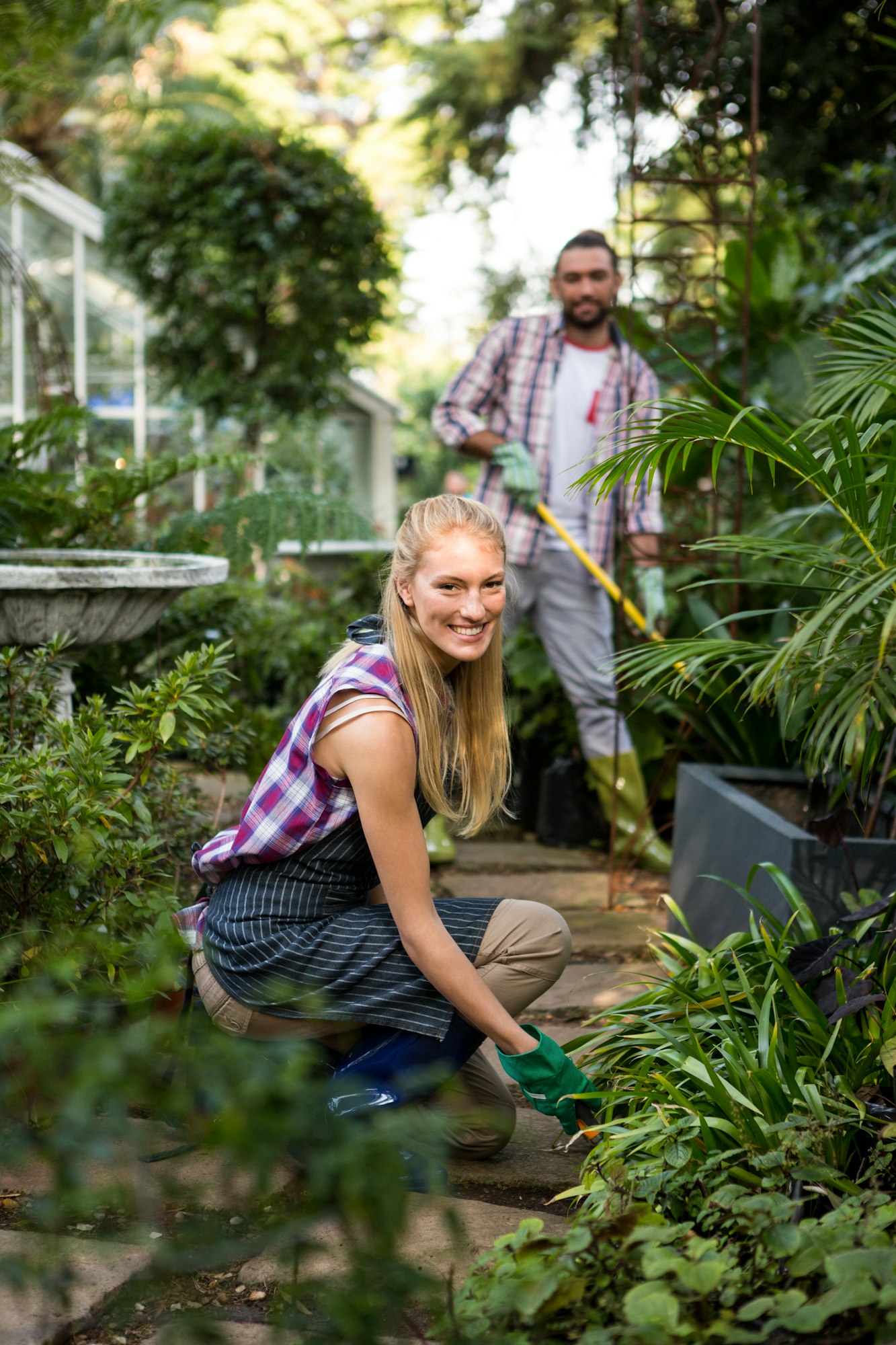
Zone 10’s year-round warmth offers continuous gardening opportunities, but it also requires regular maintenance to keep gardens thriving. Here’s a month-by-month checklist, along with a note on the importance of pest control and disease management.
January
- Planning: Start planning your garden for the year. Order seeds and garden supplies.
- Pruning: Prune non-spring blooming shrubs and trees. It’s a good time to shape citrus trees.
February
- Soil Preparation: Begin preparing beds for spring planting. Incorporate compost and other organic matter into the soil.
- Planting: Start early crops and spring flowers. Consider starting seeds indoors for transplanting later.
March
- Transplanting: Begin moving seedlings outdoors as the weather stabilizes.
- Direct Sowing: Plant warm-season vegetables and continue with spring flower planting.
April
- Watering: Adjust watering schedules as temperatures start to rise. Early morning is the best time to water.
- Mulching: Apply mulch to garden beds to conserve moisture and suppress weeds.
May
- Pest Monitoring: Start regular inspections for pests. Implement control measures as needed.
- Fertilizing: Feed your garden with a balanced fertilizer to support growth.
June
- Summer Planting: Continue planting heat-tolerant varieties of vegetables and flowers.
- Pruning: Deadhead spent blooms to encourage new growth.
July
- Watering: Increase watering frequency to cope with the summer heat.
- Pest and Disease Control: Stay vigilant and treat any issues promptly to prevent spread.
August
- Plant Maintenance: Continue deadheading and weeding. Start planning and preparing for fall planting.
- Soil Care: Add organic amendments to prepare for late summer or fall plantings.
September
- Fall Planting: Begin planting cool-season crops and flowers. Start fall garden cleanup.
- Lawn Care: Overseed and fertilize the lawn for fall growth.
October
- Garden Cleanup: Remove spent plants and debris. Mulch perennials for winter protection.
- Planting: Continue with cool-season planting. It’s a good time to plant trees and shrubs.
November
- Harvesting: Collect seeds from annuals and harvest late-season crops.
- Watering: Adjust watering schedules as temperatures cool.
December
- Reflection: Review what worked in your garden over the past year and plan for adjustments next year.
- Protection: In cooler areas of Zone 10, protect sensitive plants from any unexpected cold snaps.
The Importance of Regular Pest Control and Disease Management
In Zone 10, the warm climate can encourage year-round activity of pests and diseases. Regular monitoring and early intervention are crucial for maintaining a healthy garden. Implement integrated pest management (IPM) strategies, combining physical, cultural, biological, and chemical controls to minimize environmental impact.
Encourage beneficial insects that prey on harmful pests, and use targeted, eco-friendly treatments for specific problems. Healthy plants are less susceptible to issues, so prioritize proper watering, nutrition, and spacing to promote vigorous growth.
By following this monthly maintenance schedule and emphasizing diligent pest and disease management, gardeners in Zone 10 can enjoy lush, vibrant gardens throughout the year.





